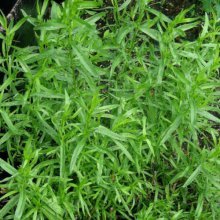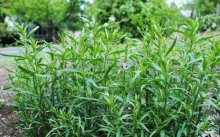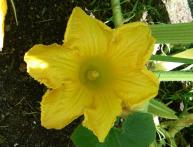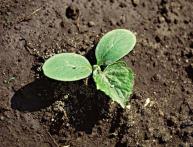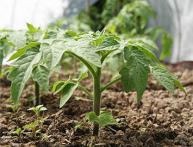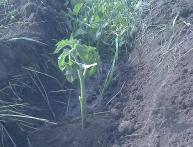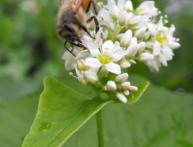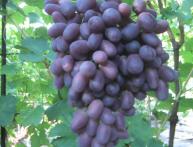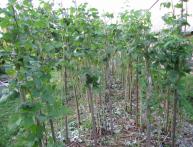Tarragon grass: description, cultivation, use
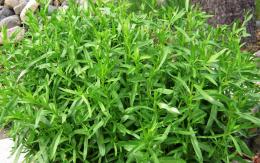
Many people associate the name tarragon with a green carbonated drink. The drink got its name thanks to the herb of the same name, which also has other names.
Tarragon - a herb that is known to many as tarragon or tarragon wormwood. It has a pleasant and light aroma, a rich vitamin composition, so it is in demand among chefs, used in folk medicine and feels great as a garden crop.
Content:
- Tarragon (tarragon) and its botanical description
- Tarragon varieties, planting and care
- Tarragon in folk medicine and cooking
Tarragon (tarragon) and its botanical description
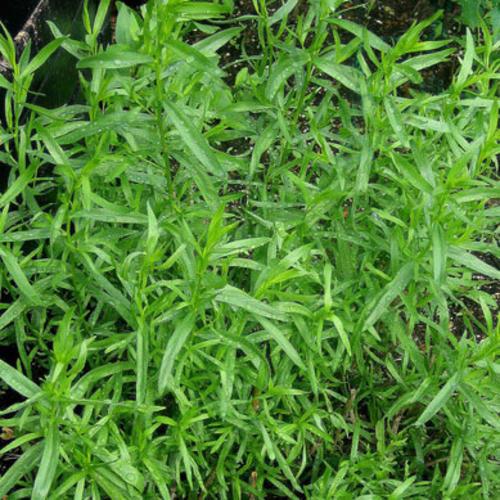
Tarragon is a perennial herbaceous plant from the genus Artemisia, Asteraceae family. It is quite widespread in the wild.
It is found both in Europe, Asia, India, and on the American continent, and in South and North America.
In Russia, it can be found not only in Siberia and the Far East, but also in the European part. In Transcaucasia there is a low variety, which locals call tarragon.
The plant has the form of a bush of various sizes, in appearance it resembles wormwood. The height of wild tarragon varies from 30 cm to one meter and even a little higher.
In cultivation, some varieties exceed one and a half meters in height. Root system powerful, tough, with many shoots, with age it becomes similar to a lignified rhizome.
The roots of the plant curl intricately and in appearance resemble a snake snake. Because of this similarity, the French gave the grass the name "grass".
The stems of tarragon are straight and strong. The leaves are narrow, elongated, slightly pointed. The leaf blade of the upper leaves has a solid edge, while the lower ones have a slightly indented edge.
The length of the leaves is on average 3 - 4 cm, width from 0.3 cm to 0.7 cm. The color is predominantly dark green. Tarragon leaves smell slightly like anise and, although it belongs to the genus Wormwood, they have a pleasant taste and are not at all bitter.
At the end of summer, small flowers appear on the plant, collected in narrow paniculate inflorescences; the color of the flowers is light yellow. By October, very small, oblong brown seeds ripen in place of the flowers.
The weight of 1000 pieces barely reaches half a gram. Tarragon of several varieties is grown in culture, Russian, French, Polish.
The plant was brought to Europe in general and to France in particular by the Arabs, who had known about the medicinal properties of tarragon since the 35th century AD. Tarragon is unpretentious and easy to grow in a summer cottage.
Tarragon varieties, planting and care
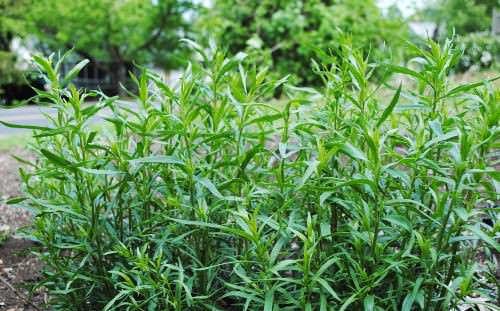
Two varieties of tarragon are usually grown in cultivation: Russian and French. In terms of winter hardiness and unpretentiousness, it is better to give preference to Russian tarragon, but French is more aromatic.
Varieties
The following varieties can be recommended for cultivation on a personal plot:
- Green dol - distinguished by delicate leaves that do not become rough for a long time. Grows as a subshrub up to 120 cm high. Winter-hardy.
- Goodwin - the leaves have a light waxy coating, remain tender for a long time, the bush is up to one meter in height, the shoots are densely leafy.
- Gribovsky 31 - the bush produces up to forty shoots up to one meter high. The most resistant variety to adverse weather conditions. Tolerates low temperatures, excess and lack of moisture.
- Zhelubinsky Semko - grows well without transplanting in one place for up to seven years. Young shoots are tender. The leaves have an excellent aroma and taste.
- Monarch is a tall variety, reaching a height of 150 cm. The leaves have slight pubescence and are recommended for use in home cooking and canning.
Growing
To plant tarragon, it is not necessary to allocate a separate area or bed. It can be planted in any free space in the garden or vegetable garden.
It is unpretentious, however, in a very wet area the leaves may lose their aroma, and in swampy soil tarragon will not grow at all.
One of the main conditions is soil preparation. Weeds should be removed before planting. This is especially true for difficult-to-remove wheatgrass. After this, the soil is dug up onto the bayonet of a shovel.
This should be done in the fall with the simultaneous application of organic and mineral fertilizers. For 1 sq. per meter, it is enough to add 5 - 6 kg of compost and a large spoonful of potash and phosphate fertilizers.
In the spring, immediately before planting, add ammonium nitrate. Just one small spoon is enough, since with an excess of nitrogen fertilizers, although tarragon produces a lush green bush, it loses its aroma.
You can sow seeds directly into the ground, but then the seedlings must not only be thinned out, but also the bushes must be planted further away from each other. Tarragon grown from seedlings also takes root well.
If possible, tarragon can be propagated by dividing the bush or by root suckers.It is the latter method that can be recommended for amateur breeding.
It is enough to separate several shoots from the mother plant, plant them with the root collar buried in the soil by about 5 - 6 cm and water abundantly, shorten the above-ground part, leaving 15 - 20 cm.
Annual care consists of weeding and applying fertilizer. After five to seven years, it is better to move the tarragon to a new place.
Even one or two bushes of this plant will not only provide the family with a delicious seasoning for their dishes, but will also help cope with some diseases.
Tarragon in folk medicine and cooking
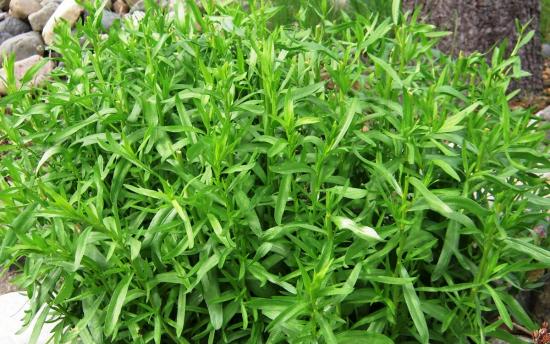
ethnoscience
The health benefits of tarragon come primarily from eating it fresh. Rich vitamin composition (A, C, E), the presence of minerals: potassium, iron, phosphorus, calcium.
They also have a beneficial effect on the body, improve the functioning of the gastrointestinal tract, keep the cardiovascular system in good shape, and have a beneficial effect on the immune system.
In addition, it can be recommended as food for those people who adhere to a diet with a low salt content; its taste mitigates its deficiency.
Tarragon decoction is also used as an anthelmintic. However, moderation should be observed when consuming tarragon, and during pregnancy it is better to avoid it altogether.
Cooking
In cooking, fresh and dried tarragon is used to season meat and fish dishes, and it is added when canning vegetables. Tarragon is used like a spice.
You can prepare an excellent natural drink to quench your thirst in hot weather.
To do this, you need a bottle of ordinary mineral water, a bunch of tarragon, sugar and plain water. Boil syrup from a glass of water and one hundred grams of sugar.Pour finely chopped tarragon over it and let it brew for half an hour.
Strain the syrup, cool and dilute with cold mineral water to taste. A pleasant and healthy drink is ready.
Thus, tarragon grown on the site diversifies the daily menu and brings health benefits.
Video about proper cultivation of tarragon:
Interesting information about the vegetable garden

